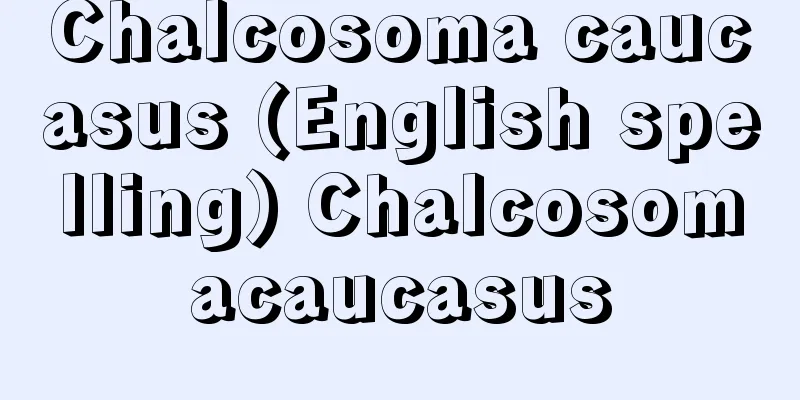Nanzenji Temple

|
Located in Nanzenji Fukuchi-cho, Sakyo Ward, Kyoto City, this is the head temple of the Rinzai sect of Zen Buddhism, Nanzenji School. Its official name is Zuiryo-san Taihei Kokoku Nanzen-ji, and it is the top Zen temple of Kyoto's Five Mountains. The temple was built in 1291 (Shoo 4) by the retired Emperor Kameyama, who converted his villa into a temple. It was originally called Ryoanzan Zenrin-ji, but when it was renamed Nanzen-ji, Mukan Fumon (Busshin Zenji, Taimin Kokushi), who inherited the teachings of Enni Ben'en, the founder of Tofuku-ji, was invited to be the founding priest. Kian Soen, a disciple of the temple, became the second abbot and built the foundations of the temple. In 1299 (Shoan 1), Emperor Kameyama ordered that particularly outstanding Zen monks from the various temples be appointed as abbots, and after this, such famous monks as the 3rd abbot Issan Ichinei, the 5th abbot Yakuo Tokuken, the 9th abbot Muso Soseki, the 15th abbot Kokan Shiren, the 39th abbot Shunkoku Myoha, and the 44th abbot Gido Shushin entered the temple. Nanzen-ji Temple had an extremely high social status, and in 1335 (Kenmu 2) it was made the first of the Five Temples of Kyoto, and in 1383 (Kouwa 3/Eitoku 3) when Ashikaga Yoshimitsu established the system of the Five Temples and Ten Temples of Kyoto and Kamakura, it was placed above the Five Temples as the number one in the country. Under the protection of successive imperial courts and the Ashikaga, Toyotomi, and Tokugawa families, during the Edo period the 270th abbot, Ishin Suden, was entrusted by the shogunate to oversee policies related to temples and shrines, and in 1615 (Genwa 1) he became Sorokushi, the predecessor of the Temples and Shrines Magistrate. The temple buildings were destroyed by fire several times before 1467 (Onin 1), and the existing buildings such as the Sanmon Gate (Sanmon), Hatto, Hojo, and Chokushimon Gate were constructed after the Azuchi-Momoyama period. The Sanmon Gate (a national important cultural property) was rebuilt by Todo Takatora in 1628 (Kan'ei 5) to pray for the souls of the soldiers who fell in the Summer Siege of Osaka, and is called Tenka Ryumon, and the upper tower is called Goho-ro. It is also famous for the legend of Ishikawa Goemon in the kabuki play "Roumon Gosan no Kiri". The Hojo (national treasure) is divided into the Dai-hojo and Ko-hojo. The Daihojo was relocated from the former Seiryoden (one theory says it was the audience hall of the Ogimachi-in Imperial Palace), which was bestowed by Emperor Goyozei in 1611 (Keicho 16), and each room has gorgeous Momoyama-style sliding door paintings said to be the work of Kano Motonobu and Eitoku. The Kohojo is a remnant of the former Fushimi Castle, and is famous for its sliding door painting "A Tiger Holding a Water Drinker," said to be the work of Kano Tanyu. The garden on the south side of the Daihojo is a Zen temple-style dry landscape garden said to have been created by Kobori Enshu during the Keicho era (1596-1615), and is commonly known as the "Tiger Cub Crossing Garden" due to the appearance of its huge rocks. On the north side is the Souhen-style teahouse Fushiki-an, and the bamboo fence surrounding the garden is called Nanzenji-gaku. The temple treasures include the Emperor Kameyama's Zenrinji Gogan Mon'an (National Treasure), paintings such as the founder's "Chinzo Daimyo Kokushi Statue," "Shaka 16 Good Gods Portrait," "Yakusan Li Kun Dialogue," "East Mountain Fishing Boat" (by Jiang Sansong), and "Dharma Statue" (by Shokei), as well as a wooden sculpture of the Shokannon standing statue and a craftwork such as the Kamakura-bori Peony Pattern Incense Box (botan moyo kogo) (all Important Cultural Properties). There are currently 12 sub-temples: Konchi-in, Tenju-an, Kiun-in, Koun-ji, Chosho-in, Shinjo-in, Kotoku-an, Hoko-ji, Jishi-in, Shoin-an, Shoteki-in, and Nanyo-in. Konchi-in is home to two paintings, "Small Building in the Shade of the River River" and "Autumn and Winter Landscapes," both of which are national treasures, as well as the Eight Windowed Tea House (Important Cultural Property), designed by Kobori Enshu at the request of Suden. The branch temple, Nanzen-in, is the remains of the "Kaminomiya" villa of Zenrin-jidono, and is said to be the birthplace of Nanzen-ji. [Akira Suganuma] "History of Nanzenji Temple" by Kageo Sakurai (1977, Hozokan)" ▽ "History of Medieval Japanese Zen Buddhism" by Jundo Ogisu (1976, Mokujisha)" ▽ "Ancient Temple Pilgrimage: Kyoto 12: Nanzenji Temple" (1977, Tankosha) Painting by Hasegawa Sadanobu (first generation) National Diet Library “The Great Lantern of Nanzenji Temple” Source: Shogakukan Encyclopedia Nipponica About Encyclopedia Nipponica Information | Legend |
|
京都市左京区南禅寺福地町にある臨済(りんざい)宗南禅寺派の大本山。正式には瑞竜(ずいりょう)山大平興国(たいへいこうこく)南禅禅寺といい、京都五山の首位にたつ禅寺である。1291年(正応4)亀山(かめやま)上皇が離宮を改めて建てた寺で、初め竜安山禅林禅寺と称していたが、南禅寺とするにあたって東福寺開山円爾弁円(えんにべんえん)の法を継いだ無関普門(むかんふもん)(仏心(ぶっしん)禅師、大明(たいみん)国師)を招いて開山とした。門下の規庵祖円(きあんそえん)が第2世となってこの寺の基礎を築いた。1299年(正安1)亀山上皇の勅命で諸山の禅僧のうちでとくに優れた者を住持させることになってからは、第3世一山一寧(いっさんいちねい)、第5世約翁徳倹(やくおうとくけん)、第9世夢窓疎石(むそうそせき)、第15世虎関師錬(こかんしれん)、第39世春屋妙葩(しゅんおくみょうは)、第44世義堂周信(ぎどうしゅうしん)などの名僧が入山した。南禅寺の社会的な地位はきわめて高く、1335年(建武2)に京都五山の第一とされ、1383年(弘和3・永徳3)に足利義満(あしかがよしみつ)が京都鎌倉五山十刹(じっさつ)の制度をつくった際には、天下第一位として五山の上に置かれた。歴代の朝廷や足利、豊臣(とよとみ)、徳川諸家の保護を受け、江戸時代には第270世以心崇伝(いしんすうでん)が幕府の信任を受けて寺社関係の政策をつかさどり、1615年(元和1)寺社奉行(ぶぎょう)の前身である僧録司(そうろくし)となった。 諸堂伽藍(がらん)は1467年(応仁1)までに数度の火災で焼失し、山門(三門)、法堂(はっとう)、方丈、勅使門など現存の建物は安土(あづち)桃山時代以後の建造物である。山門(国重要文化財)は1628年(寛永5)大坂夏の陣に倒れた将士の菩提(ぼだい)を弔うため藤堂高虎(とうどうたかとら)によって再建されたもので、天下竜門といい、上層の楼を五鳳楼(ごほうろう)とよぶ。また歌舞伎(かぶき)の『楼門五三桐(さんもんごさんのきり)』の石川五右衛門(ごえもん)の伝説で有名。方丈(国宝)は大方丈と小方丈に分かれている。大方丈は1611年(慶長16)後陽成(ごようぜい)天皇より下賜された旧清涼殿(一説には正親町(おおぎまち)院御所対面所)を移建したもので、各室には狩野元信(かのうもとのぶ)・永徳(えいとく)筆と伝える豪華な桃山式の襖絵(ふすまえ)がある。小方丈は旧伏見(ふしみ)城の遺構で、狩野探幽(たんゆう)筆と伝える襖絵『水呑(みずのみ)の虎(とら)の図』は名高い。大方丈南面の庭園は慶長(けいちょう)年間(1596~1615)小堀遠州作と伝える禅院式枯山水(かれさんすい)庭園で、巨石の姿から俗に「虎の子渡しの庭」とよばれる。北側には宗徧(そうへん)流の茶室不識庵(ふしきあん)があり、露地を囲む竹垣は南禅寺垣といわれる。寺宝には、亀山天皇宸翰(しんかん)禅林寺御起願文案(国宝)をはじめ、開山の『頂相(ちんぞう)大明国師像』、『釈迦(しゃか)十六善神画像』、『薬山李翺(やくさんりこう)問答図』、『江山漁舟図』(蒋三松筆)、『達磨(だるま)像』(祥啓筆)などの絵画、彫刻では木造聖観音(しょうかんのん)立像、工芸では鎌倉彫牡丹模様香盒(ぼたんもようこうごう)(以上、重文)などがある。 塔頭(たっちゅう)は現在、金地(こんち)院、天授(てんじゅ)庵、帰雲(きうん)院、光雲(こううん)寺、聴松(ちょうしょう)院、真乗(しんじょう)院、高徳(こうとく)庵、法皇(ほうこう)寺、慈氏(じし)院、正因(しょういん)庵、正的(しょうてき)院、南陽(なんよう)院の12院がある。金地院には『渓陰小築(けいいんしょうちく)図』『秋景冬景山水図』二幅(ともに国宝)などや、小堀遠州が崇伝の依頼を受けて設計した茶室八窓(はっそう)席(重文)がある。また、別院南禅院は離宮禅林寺殿の「上の宮」遺跡で、南禅寺発祥の地といわれている。 [菅沼 晃] 『桜井景雄著『南禅寺史』(1977・法蔵館)』▽『荻須純道著『日本中世禅宗史』(1976・木耳社)』▽『『古寺巡礼 京都12 南禅寺』(1977・淡交社)』 長谷川貞信(初世)画国立国会図書館所蔵"> 『都名所之内 南禅寺大燈爐』 出典 小学館 日本大百科全書(ニッポニカ)日本大百科全書(ニッポニカ)について 情報 | 凡例 |
<<: Nansensho, the Mandarin of the South
Recommend
Matamoros (English spelling)
A city in the northeastern part of Tamaulipas stat...
Freirechtsbewegung
…A revolutionary movement in jurisprudence that a...
Silverfish - Gingyo
〘Noun〙① A type of goldfish. A goldfish that grows ...
Reserves - reserves
The amount of material present underground down to...
《Der Kampf um die Rechtswissenschaft》 (English notation)Der Kampfum die Rechtswissenschaft
…Starting from his research into the history of I...
Australian heath
...Dense riverine forests of red gum (Eucalyptus ...
Science Research Institute
…Abbreviated as RIKEN. Japan's leading compre...
Finnic
…The Uralic languages are broadly divided into ...
L Electron capture - EL denshihokaku
...Also, because the charge of the nucleus change...
Banquetting House
…Since the 13th century, it had been the residenc...
Saint Albans
A city in Herfordshire, north of London, England. ...
External hardness - External hardness
This is an argument that emphasizes the restorati...
Rakuto Flora
A general term for fossil plants found in the Sind...
Piñgala (English spelling) Pingala
…Based on this, it is said that truth is expresse...
Orancistrocerus drewseni (English spelling)
...All of them are about 10 to 20 mm in body leng...









